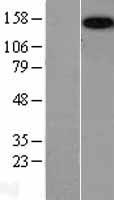order histories, retained contact details for faster checkout, review submissions, and special promotions.
Forgot password?
order histories, retained contact details for faster checkout, review submissions, and special promotions.
Location
Corporate Headquarters
Vector Laboratories, Inc.
6737 Mowry Ave
Newark, CA 94560
United States
Telephone Numbers
Customer Service: (800) 227-6666 / (650) 697-3600
Contact Us
Additional Contact Details
order histories, retained contact details for faster checkout, review submissions, and special promotions.
Forgot password?
order histories, retained contact details for faster checkout, review submissions, and special promotions.
CNTNAP2 / CASPR2
contactin associated protein-like 2
CNTNAP2 / CASPR2 is a member of the neurexin family which functions in the vertebrate nervous system as cell adhesion molecules and receptors. This protein, like other neurexin proteins, contains epidermal growth factor repeats and laminin G domains. In addition, it includes an F5/8 type C domain, discoidin/neuropilin- and fibrinogen-like domains, thrombospondin N-terminal-like domains and a putative PDZ binding site. This protein is localized at the juxtaparanodes of myelinated axons, and mediates interactions between neurons and glia during nervous system development and is also involved in localization of potassium channels within differentiating axons. This gene encompasses almost 1.5% of chromosome 7 and is one of the largest genes in the human genome. It is directly bound and regulated by forkhead box protein P2 (FOXP2), a transcription factor related to speech and language development. This gene has been implicated in multiple neurodevelopmental disorders, including Gilles de la Tourette syndrome, schizophrenia, epilepsy, autism, ADHD and mental retardation.
| Gene Name: | contactin associated protein-like 2 |
| Family/Subfamily: | Neurexin , Not assigned-Other |
| Synonyms: | CNTNAP2, AUTS15, CDFE, CASPR2, KIAA0868, PTHSL1, NRXN4 |
| Target Sequences: | NM_014141 NP_054860.1 Q9UHC6 |





If you do not find the reagent or information you require, please contact Customer.Support@LSBio.com to inquire about additional products in development.









